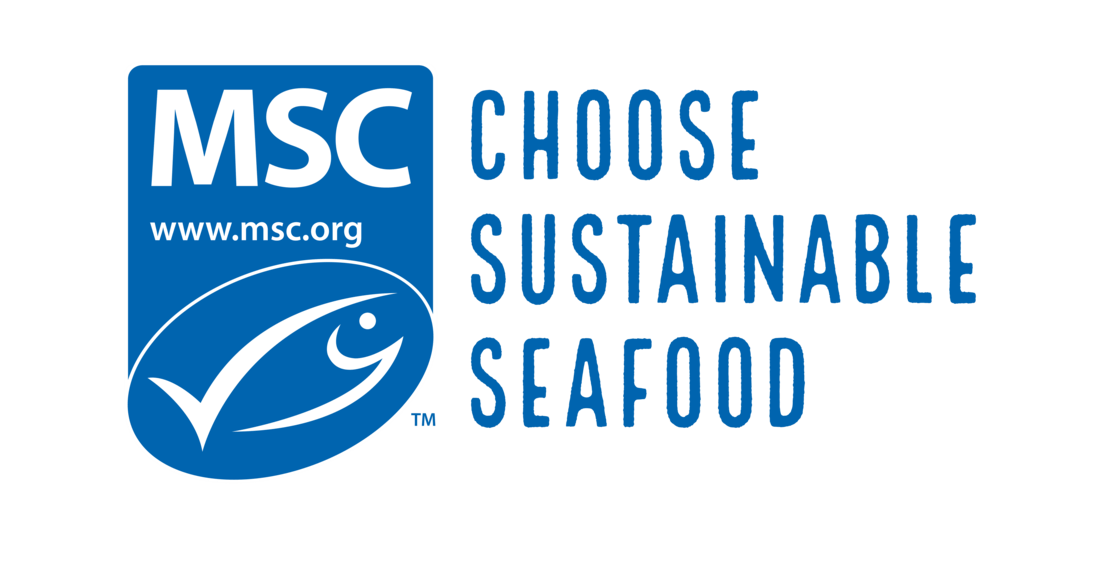Sustainable seafood means it has been caught in a way that means there’s plenty more fish in the sea now and in the future.
How can seafood be sustainable?
We believe we should have fish forever, so we use science to end overfishing. As scientists who care about people and the planet, we maintain the world-leading MSC Fisheries Standard for sustainable fishing. To be certified, fisheries must demonstrate that they are:
- Maintaining healthy populations of fish;
- Minimising impact on the marine environment;
- Fish in an area with effective, responsive, and responsible management.
Seafood should also be traceable within the supply chain. This is important because seafood fraud threatens livelihoods, adds to the overfishing problem and can be bad for your health. Thousands of our partners use five simple steps to eradicate seafood fraud by using the MSC Chain of Custody Standard.
What is the MSC and why is certified sustainable seafood important?
Why is sustainable seafood important?
Seafood is an important source of protein for millions of people globally. Choosing sustainable seafood is important because it recognises and rewards sustainable fishing practices. This in turn supports livelihoods, communities, food security and healthy oceans teeming with life.How do I know if my seafood is sustainable?
When shopping or dining for seafood, just look for the MSC blue fish tick. This label shows that the seafood can be traced back to healthy fish populations that have been sustainably fished.
There are over 500 products with the MSC blue fish tick in Australia and New Zealand. Sustainable seafood is available to buy at many well-known brands and retailers.
If you can't find wild sustainable seafood, you might consider responsibly farmed seafood. It's good to understand the difference between wild and farmed seafood and their impacts on people and the planet.
If there is no label then ask questions about the source of the seafood, consider an alternative choice or consult a seafood guide. Here are six practical steps to help end overfishing.
Here's our complete guide to sustainable seafood in Australia and New Zealand

The MSC blue fish tick label with the words 'Choose sustainable seafood'
History of the sustainable seafood movement
The sustainable seafood movement began in the 1990s with a growing consciousness around the importance of protecting a source of wild food, good jobs, and healthy oceans.The 1992 collapse of Canada’s Grand Banks cod fishery was a resounding wake-up call and one of the catalysts for the creation of the MSC. Almost overnight, more than 35,000 fishermen and plant workers from over 400 coastal communities lost their jobs when the cod fishery was closed indefinitely.
This highlighted the need for a global collaboration to find a solution to overfishing and prompted the World Wildlife Fund (WWF) and Unilever – a transnational consumer goods company and the biggest consumer of cod at the time of the collapse – to initiate a project that would result in a scientifically-driven standard to define sustainable fishing, and ultimately establish the MSC.
Founded in 1997, the MSC created the first and still most recognized certification for wild, sustainable seafood. Now, 20 years later, we have seen firsthand the power of positive change. More than 10 million tons of seafood worldwide comes from MSC certified sustainable fisheries.
We are committed to continuing this mission and ensuring that anyone and everyone who loves or relies on seafood and wants to continue enjoying this wild and delicious source of healthy food can do so for years to come.
Fish forever
To have fish forever, we must fish sustainably. The sustainability of a fishery is an ongoing process. After MSC certification, fisheries are regularly audited and many are required to make improvements to retain their certificate. Scientific knowledge improves all the time and fisheries are encouraged to develop new ways of conserving marine resources for future generations.
Read more about how MSC certified fisheries are making improvements.
Where to find the blue fish tick

Featured{{item.Headline}}
{{item.Description}}
Your guide to sustainable seafood
Find out where to buy, what to look for and the questions to ask.

